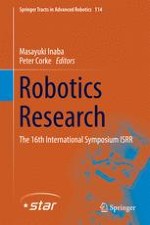2016 | OriginalPaper | Buchkapitel
Beyond Geometric Path Planning: Learning Context-Driven Trajectory Preferences via Sub-optimal Feedback
verfasst von : Ashesh Jain, Shikhar Sharma, Ashutosh Saxena
Erschienen in: Robotics Research
Aktivieren Sie unsere intelligente Suche, um passende Fachinhalte oder Patente zu finden.
Wählen Sie Textabschnitte aus um mit Künstlicher Intelligenz passenden Patente zu finden. powered by
Markieren Sie Textabschnitte, um KI-gestützt weitere passende Inhalte zu finden. powered by
